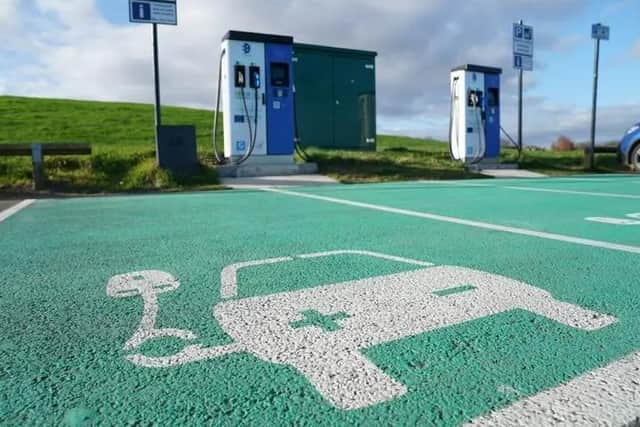Highways chiefs in Hertfordshire urged to extend electric vehicle charging as part of budget process
and live on Freeview channel 276
Calls have been made for the county council to extend its plans for the installation of electric vehicle (EV) charging points, as part of its budget-setting process.
Hertfordshire County Council has been developing an EV charging strategy based on ‘destinations’ – such as dedicated charging stations, supermarkets, leisure outlets or workplaces – rather than along streets.
Advertisement
Advertisement
But a cross-party group of councillors has now recommended the council looks to extend its EV charging coverage, particularly on its own land.


It has also been suggested the county council work more closely with others – including housing associations and district councils – and that there is some provision in areas on or close to residential streets.
The calls were made at a three-hour session designed to scrutinise the council’s ‘highways and transport’ budget proposals on Tuesday, January 18.
And they will be considered further through the council’s budget-setting process.
Advertisement
Advertisement
Raising the issue Cllr Lewis Cocking questioned the council’s concentration on ‘destination’ charging facilities, while government funding was available for alternatives.
And Cllr Nigel Taylor referred to areas in the county that relied on on-street parking – suggesting a need for charging points on those streets or close-by.
Cllr Taylor suggested a need for some charging points that were within 10 minutes walk of properties that did not have off-street parking – either at the end of streets or in nearby areas where there was less on-street parking.
And he said: “It doesn’t take much for people to find a reason for not to embrace newer technology – and we have got to reduce our dependence on carbon fuels.
Advertisement
Advertisement
“And therefore we have to understand what the barriers are to people converting.”
In response, executive member for highways and transport Cllr Phil Bibby pointed to figures that showed there were already more EV charging stations in the county than petrol stations.
There are, he said, 175 publicly available EV charging stations in the county, with 517 charging points. And that, he said, compares to 122 petrol stations.
He said that the 1.8metre width of most pavements meant there were practical considerations – with installation impacting on pedestrians or cyclists.
Advertisement
Advertisement
And he pointed to additional issues relating to the use of permits and to the complications and obsolescence of technology.
In contrast, he pointed to the ‘market’ that was already providing charging options – including car park charging at venues that, he said, already include supermarkets, Starbucks and McDonalds.
But he did accept that there would need to be a mix of options – suggesting that charging ‘hubs’ at the ends of streets may be more appropriate than on-street.
And he said the county council was committed to working with district councils to ensure there are sufficient alternative charging stations available.
Advertisement
Advertisement
In general terms, the budget proposals point to the county’s focus on ‘ensuring a safe and efficient highways system, promoting safe, reliable and sustainable travel and protecting the physical ad natural environment.
And amongst its priorities, the document lists the re-procurement of the main highways contracts, highways improvements such as the A602, the introduction of 20mph areas and a drainage programme to reduce incidents of flooding.
It also points to work to improve and support the local bus network and to deliver the ‘Intalink Enhanced Partnership’ – as well as the expansion of ‘multi-operator ticketing smart cards’.
It includes an investment of £2m a year for additional maintenance – including vegetation cut-backs, ‘signs and lines’ and ‘gulley dig outs’.
Advertisement
Advertisement
There, it says, are plans to develop a ‘carbon calculator’ to enable the ‘carbon cist’ of structural maintenance to be considered, alongside value for money.
And – in line with expected new powers – the council is seeking to invest in order to use automatic number plate recognition ANPR to enforce more traffic offences.
During the scrutiny session – chaired by Cllr Richard Butler – the cross-Party group of councillors highlighted issues relating to maintenance, locality budgets, 20 mph limits and capital spending.
Among their further recommendations was that a contingency must be in place for staffing vacancies.
Advertisement
Advertisement
And they suggested ‘CAT 1′ potholes within one metre of the kerb should be prioritised within the new highways maintenance contract – due to the impact on cyclists.
In the past, this scrutiny of the county council’s budget proposals has been conducted in private. But this year the sessions – which are virtual – are being webcast and can be viewed at www.hertfordshire.gov.uk/watchmeetings.
